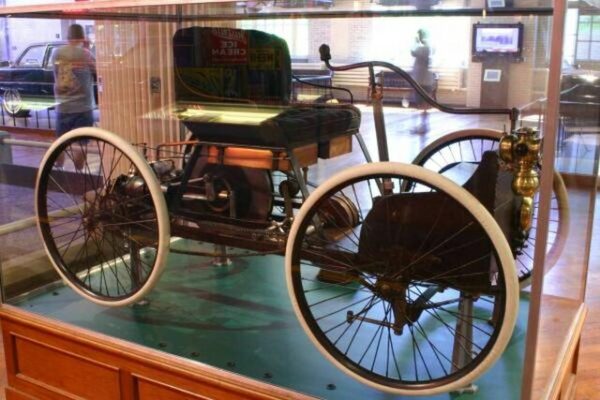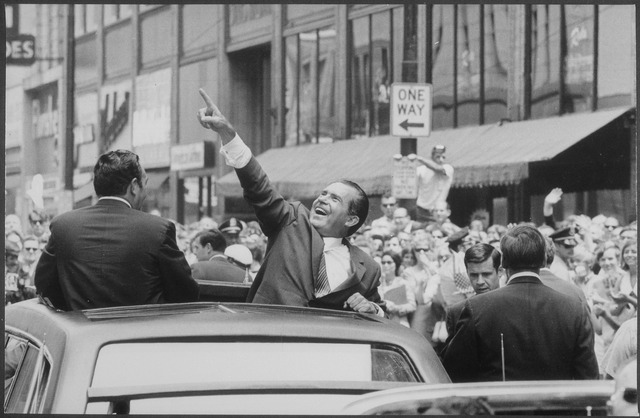On June 4, 1896, in the early hours of the morning, Henry Ford took his first significant step towards revolutionizing personal transportation by test-driving his pioneering invention, the Ford Quadricycle. This event marked a pivotal moment not only in Ford’s life but also in the history of the automotive industry.
The Ford Quadricycle, named for its four bicycle-like wheels, was Ford’s first attempt at creating a self-propelled vehicle. It was a straightforward yet ingenious machine, embodying Ford’s vision of simplicity and functionality. Ford built the vehicle on a lightweight steel frame powered by a two-cylinder, four-horsepower gasoline engine. This engine was a marvel of its time, featuring a design that would lay the groundwork for future automotive engineering. It had a belt-driven transmission with only two forward gears and no reverse, which was typical of the era’s experimental vehicles.
Ford constructed the Quadricycle in a small workshop behind his home in Detroit, Michigan. The project took about two years to complete, with Ford working tirelessly in his spare time while holding down his job as an engineer at the Edison Illuminating Company. His determination and mechanical ingenuity were evident in the vehicle’s design. The Quadricycle featured basic but effective components: a tiller for steering, an electric bell for a horn, and a bicycle seat for the driver.
The test drive on June 4 was an event filled with both excitement and anxiety for Ford. At around 4 a.m., accompanied by James Bishop, a close friend, and collaborator, Ford pushed the Quadricycle out of his shed. The duo encountered an immediate obstacle: the vehicle was too wide to fit through the door. Unfazed, they quickly removed part of the brick wall to create enough space. Once on the street, Ford started the engine, which roared to life with a series of loud bangs and puffs of smoke.
The Quadricycle’s first journey took place on the cobblestone streets of Detroit, covering approximately three miles. The vehicle managed to reach a top speed of about 20 miles per hour, an impressive feat for its time. Despite the rough ride and the unpaved roads, Ford’s invention performed admirably. The test drive was a success, and it proved to Ford and his supporters that gasoline-powered vehicles were a viable alternative to horse-drawn carriages.
This moment was a significant milestone for Ford. It validated his ideas and demonstrated the potential for mass-producing automobiles. The success of the Quadricycle inspired Ford to continue refining his designs and pursue his vision of making cars affordable for the average person. This ambition eventually led to the founding of the Ford Motor Company in 1903 and the production of the Model T in 1908, which revolutionized transportation and American industry.
The Quadricycle itself, though primitive by modern standards, represented a quantum leap in automotive technology. It was a crucial step in the evolution of the automobile, showcasing the feasibility of internal combustion engines and highlighting the importance of innovative thinking and persistence. Ford’s test drive on June 4, 1896, was not just a personal triumph but a significant turning point in the quest for practical and accessible personal transportation.
Today, the Ford Quadricycle is celebrated as a historic artifact and a symbol of innovation. It is preserved and displayed at the Henry Ford Museum in Dearborn, Michigan, where it continues to inspire new generations of engineers and inventors. The legacy of that early morning test drive lives on, a testament to the power of perseverance and the transformative impact of technological advancements.






